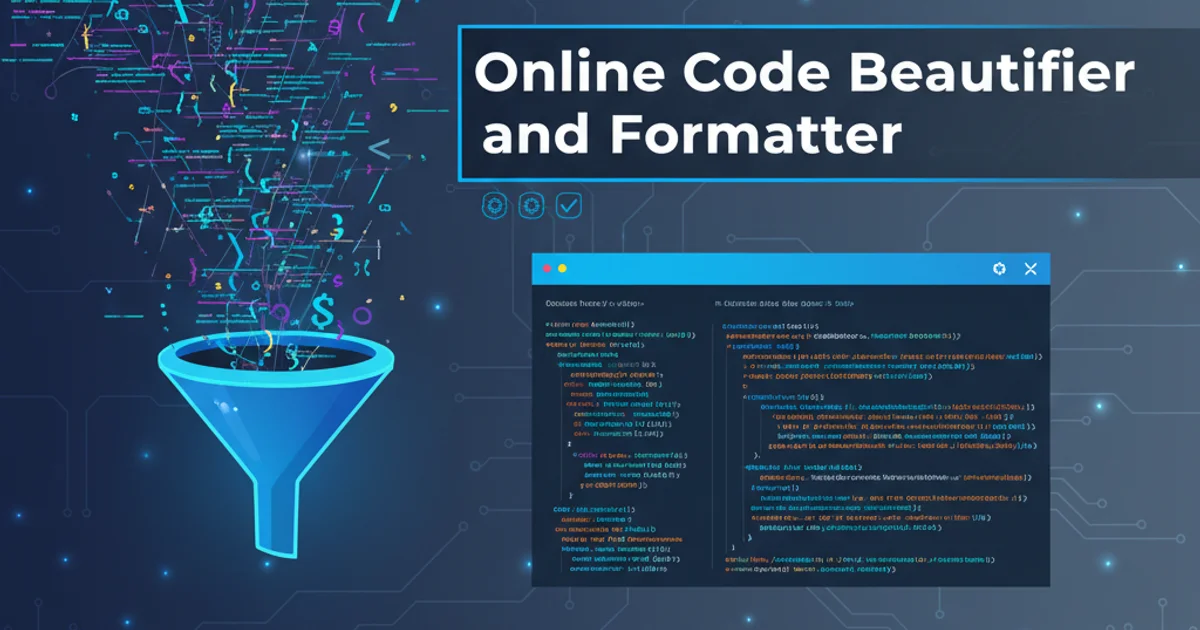Does the <li> tag in HTML have an ending tag?
Categories:
The Elusive Closing Tag: Does HTML's <li> Need One?

Explore the nuances of HTML's <li> tag, its optional closing tag, and best practices for writing robust and maintainable list structures.
The <li> (list item) tag is fundamental to structuring content in HTML, forming the building blocks of unordered (<ul>) and ordered (<ol>) lists. A common question, especially for those new to HTML or transitioning from stricter XML-based languages, is whether the <li> tag absolutely requires a closing tag. The answer, surprisingly, is often 'no' in practical terms, but 'yes' for best practices and clarity. This article delves into the technical specifications, browser behavior, and recommended approaches for using <li> tags.
HTML Specifications and Optional Tags
HTML5, the latest major version of HTML, is quite forgiving regarding certain closing tags. The specification defines a set of tags for which the end tag can be omitted under specific conditions. The <li> tag falls into this category. Specifically, an <li> element's closing tag (</li>) can be omitted if it is immediately followed by another <li> element, or if there is no more content in the parent list element (<ul> or <ol>).
This leniency is a historical artifact, designed to make HTML easier to write and more robust against minor authoring errors. Browsers are built with sophisticated error-correction mechanisms that can infer the structure of the document even when certain closing tags are missing.
<!-- Valid HTML5 with omitted </li> tags -->
<ul>
<li>Item One
<li>Item Two
<li>Item Three
</ul>
<ol>
<li>First Step
<li>Second Step
<li>Third Step
</ol>
Example of HTML5 lists where </li> tags are omitted but still render correctly.
</li> tags is technically valid in HTML5, it's generally considered a best practice to always include them for improved readability, maintainability, and compatibility with various tools and parsers.Why Explicit Closing Tags Are Recommended
Despite the HTML5 specification allowing for the omission of </li>, explicitly closing every <li> tag is widely recommended for several compelling reasons:
- Readability and Maintainability: Explicit tags make the code easier for humans to read and understand, especially in complex nested lists or when collaborating with other developers.
- Tooling and IDE Support: Many development tools, linters, and IDEs expect well-formed HTML. Omitting closing tags can sometimes confuse these tools, leading to incorrect syntax highlighting, auto-completion issues, or false error reports.
- XML/XHTML Compatibility: If there's any chance your HTML might be processed as XML or XHTML (e.g., for server-side parsing or specific rendering engines), all tags must be explicitly closed. While less common now, adhering to this practice ensures broader compatibility.
- Easier Debugging: When layout or styling issues arise, having all tags explicitly closed makes it much easier to pinpoint the exact start and end of an element, simplifying the debugging process.
- Future-Proofing: While current browsers are forgiving, future HTML specifications or stricter parsing modes might change. Adhering to fully closed tags provides a more robust and future-proof codebase.
- Consistency: Maintaining a consistent coding style across a project, including always closing tags, contributes to a more professional and error-resistant codebase.
<!-- Recommended HTML5 practice with explicit </li> tags -->
<ul>
<li>Item One</li>
<li>Item Two</li>
<li>Item Three</li>
</ul>
<ol>
<li>First Step</li>
<li>Second Step</li>
<li>Third Step</li>
</ol>
The recommended practice of explicitly closing all <li> tags.
flowchart TD
A[Start HTML Parsing] --> B{Encounter `<li>` tag?}
B -- Yes --> C[Open `<li>` element]
C --> D{Next element is `<li>` or end of list?}
D -- Yes (Omitted `</li>`) --> E[Implicitly close previous `<li>`]
E --> C
D -- No (Explicit `</li>` or other tag) --> F[Process current `<li>` content]
F --> G{Encounter `</li>` tag?}
G -- Yes --> H[Close `<li>` element]
G -- No (End of list) --> H
H --> I[Continue Parsing]
B -- No --> IBrowser's parsing logic for <li> tags, illustrating implicit closing.
<li> without proper nesting.